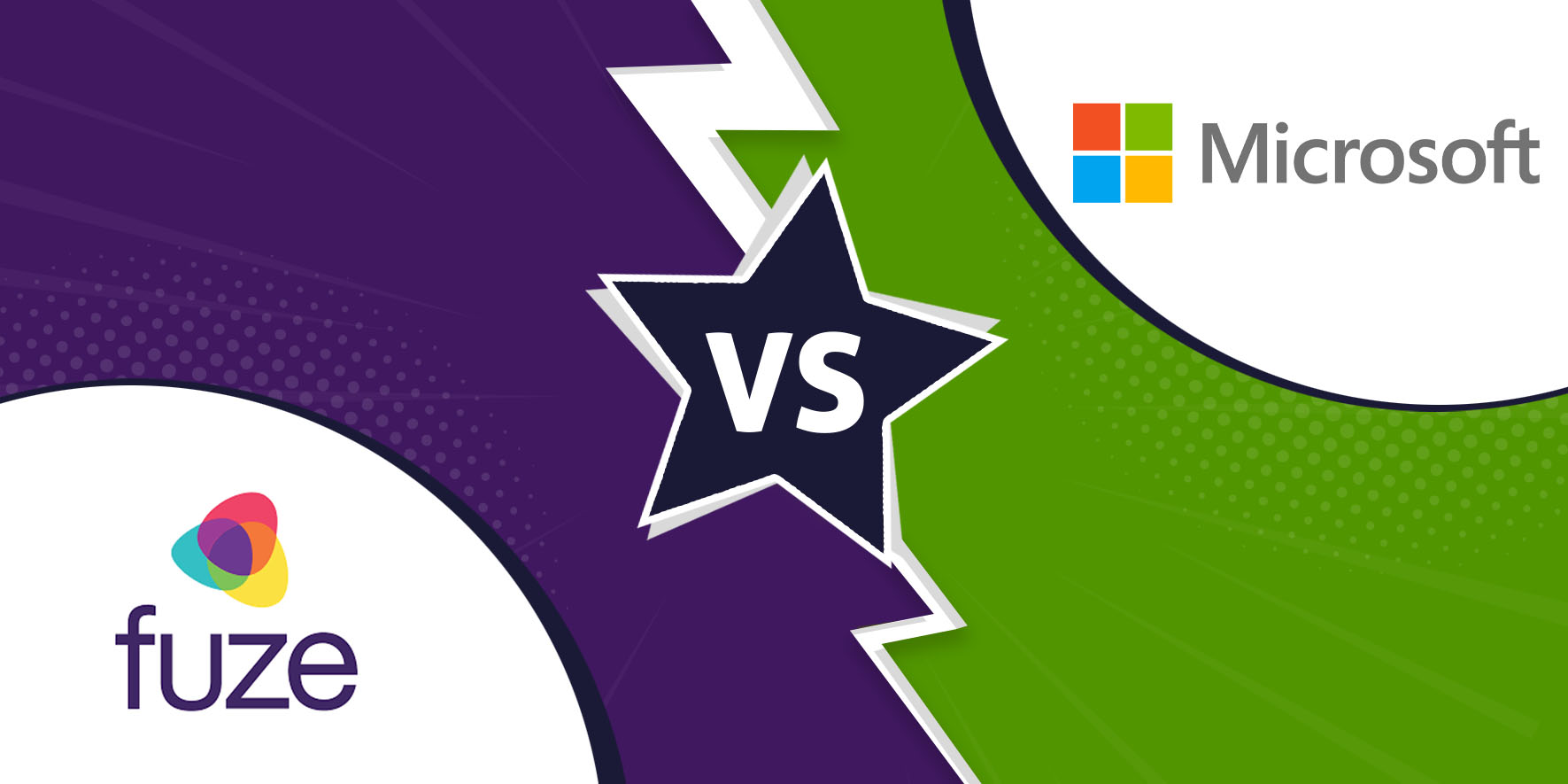Part of our Ultimate Fuze Buyer’s Guide
Looking for flexible, scalable and innovative cloud-based communications?
You’ve come to the right place.
Today, countless companies are searching for ways to upgrade their communication stack, without over-paying for new installations, hardware, and maintenance. The cloud provides a simple and effective avenue to the latest communication and collaboration services, delivered through a cost-effective OpEX model.
Two leaders in the cloud communication environment for 2018 are Fuze and Microsoft. Fuze is a cloud-focused company that began in 2006. Fuze sells their engaging communication solutions through a Unified Communications “as a service” platform. That means no installations, no costly upgrades, and no on-site tech to worry about.
Microsoft, on the other hand, is a computer and technology brand at heart. Their cloud-based communication service comes in the form of Microsoft Skype for Business Online and Microsoft Teams. Microsoft is currently working on moving their consumer base away from their on-premise Skype for Business server.
Here’s your guide to choosing between Fuze, and Microsoft.
The Financials
Since launching under the name “Thinking Phones” in 2006, Fuze has seen phenomenal success as a world-leader in Unified Communications as a Service. The company has achieved numerous major accolades with leading publications like Forbes, Gartner, and Deloitte. As a private company, Fuze doesn’t publish revenue information and financial results online. However, in 2018, the company announced that it had seen an increase of 500% in active users.
Microsoft is a public company, with a strong background in electronics, computer software, and technology. Currently, Microsoft is in the process of shifting customers away from their Skype for Business and towards their “Teams” flagship UC product. In 2018, Microsoft had:
- An operating income of $35,058 billion
- A revenue of $110,360 billion
- A total equity of $82,718 billion
Gartner Says:
The Gartner Magic Quadrant reports are some of the most highly-commended documents in the market for companies trying to decide which UC vendor to trust. In the most recent Gartner MQ report for Unified Communications as a Service, Fuze achieved the top spot in the “Visionary” quadrant for their unified communications and collaboration platform.
On the other hand, Microsoft was named a “leader” in the Unified Communications Magic Quadrant for 2018. Their innovative “Teams” service combined with the solutions offered by Skype for Business Online helped Microsoft to stay ahead of the curve for yet another year. Microsoft was also a “Challenger” in the UCaaS Magic Quadrant.
Glassdoor Says:
Microsoft is a much larger company than Fuze by far. The business revealed an employee count of around 131,300 people in 2017, compared to Fuze’s number of only 700 staff members. Both companies have a similar rating for employee satisfaction on Glassdoor.com. Microsoft achieved a score of 4.1 out of 5, while Fuze accomplished a slightly higher 4.4 out of 5.
Portfolio Comparison
The easiest way to compare Microsoft and Fuze is to look at their unified communication and collaboration offerings. Fuze provides state-of-the-art UC through their “as-a-service” platform. The collection of available solutions on the platform ranges all the way from Enterprise Voice to WebRTC-based communications, with systems like:
- Fuze Enterprise Voice
- Enterprise Voice and Modern Messaging
- Real-Time Content Sharing
- Fuze HD Video and Audio Conferencing
- Fuze Web
Microsoft delivers unified communication and collaboration through their Office 365 business productivity portfolio. Office 365 currently includes access to both Skype for Business and Microsoft Teams. Both services provide similar solutions to the Fuze platform, including options for video and audio conferencing, real-time content sharing, instant messaging, and much more.
Target Market and Regional Availability
Fuze and Microsoft products are both available around the world. The primary market for Fuze’s solutions is mid-market and large enterprise companies. On the other hand, Microsoft offers a broader range of solutions intended to suit any size business. The recently announced “freemium” version of Microsoft Teams, which could make the vendor ideal for freelancer and “micro” companies.
Pricing
Fuze doesn’t offer pricing for its products online. If you want to get a quote for the Fuze platform, you’ll need to contact their sales team. On the other hand, Microsoft offers both Skype for Business and Microsoft Teams as part of the Office 365 portfolio. Prices for Office 365 licenses are:
- £7.90 per month, per user for Office 365 Business
- £9.40 per month, per user for Office 365 Business Premium
- £3.80 per month, per user for Office 365 Business Essentials
Microsoft Teams “Free” is also great for companies with less than 300 users.
Finishing Thoughts
Both Fuze and Microsoft offer a fantastic range of options for unified communication and collaboration. Microsoft is one of the leaders in the UC market today, with expertise in everything from personal computing to conferencing software. On the other hand, Fuze offers a simple, scalable, and unified solution for UC ideal for mid-market and enterprise customers. The choice of which option is right for you will depend on the needs of your company.







